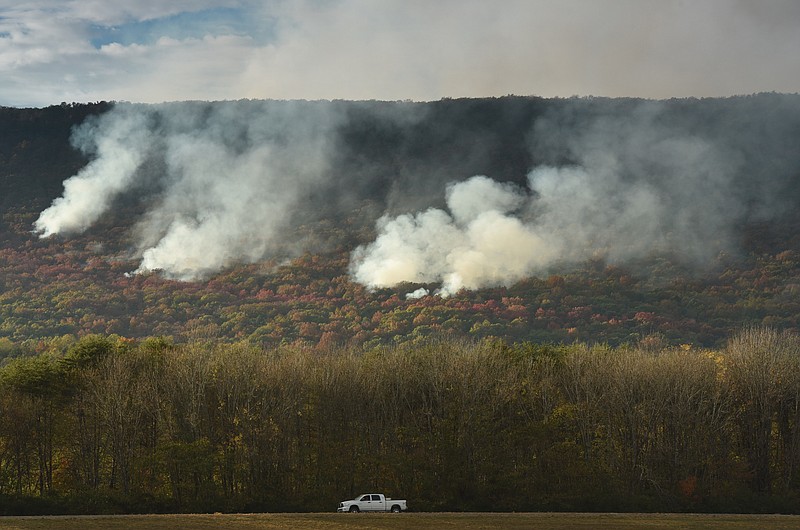NASHVILLE - Florida Forest Service crews fighting Southeast Tennessee wildfires began demobilizing Tuesday from their Kimball, Tenn.-based Incident Command Post to return home.
Supervision of firefighting efforts will go back to the Tennessee Division of Forestry following a transition.
"We are grateful for the hard work and long hours given by our associates from the Florida Forest Service," State Forester Jere Jeter said in a news release. "Their involvement was instrumental in fighting fires in Hamilton County and enabled our local staff to increase focus on other active fires."
The 12-member Florida Forest Service team, part of the Florida Department of Agriculture and Consumer Services, has supervised the Flipper Bend, Poe Road and Mowbray fires since Nov. 11.
As of Tuesday morning, the Flipper Bend fire was 100 percent contained at 981 acres. The Poe Road fire was 98 percent contained at 712 acres, while the Mowbray fire was 98 percent contained at 899 acres.
The Tennessee Division of Forestry will continue to actively monitor the sites.
A fire that is 100 percent contained is completely surrounded by natural barriers like streams, man-made impediments including roads and/or deliberately constructed barriers such as fire lines cut by bulldozers.
Officials noted that a contained fire is not necessarily extinguished, which is why crews continue to monitor containment lines to ensure quick response should a fire begin spreading beyond the lines.
Fires have struck thousands of acres of property in the Southeast due to months-long drought conditions, including many areas of East Tennessee. Gov. Bill Haslam and state officials say a number of them have been deliberately set by arsonists.
Meanwhile, with many Tennessee farmers still grappling with the drought, Haslam on Tuesday issued an executive order easing restrictions on trucks hauling hay for livestock.
"Agriculture is critical to our state's economy, and rain is a critical ingredient that farmers need to keep their businesses running," Haslam said in a news release. "This order will allow haulers to move hay across and through Tennessee efficiently, so farmers can feed their livestock during these drought conditions."
Haslam's executive order increases the height of hay trailer loads to 13 feet, 6 inches and the width to a maximum of 14 feet during daylight hours on Tennessee highways.
The average round bale of hay measures seven feet across. The increase in width allows haulers to transport standard round hay bales side by side, increasing the capacity hauled per truck without a special permit.
But transporters must have the proper oversize signs and escorts as required by the Tennessee Department of Transportation. And trucks and drivers must be properly licensed. Maximum weight limits outlined in Section 55-7-203 of the Tennessee code remain in effect.
The executive order expires Jan. 31.
Tennessee Agriculture Commissioner Jai Templeton said the governor's decision is important, given that farmers "have seen their share of weather-related challenges this year."
Haslam's order, Templeton said, "will help enable livestock owners to provide the best care possible during this drought."
The state is a major producer of hay, ranking fifth in the nation in 2015, excluding alfalfa.
